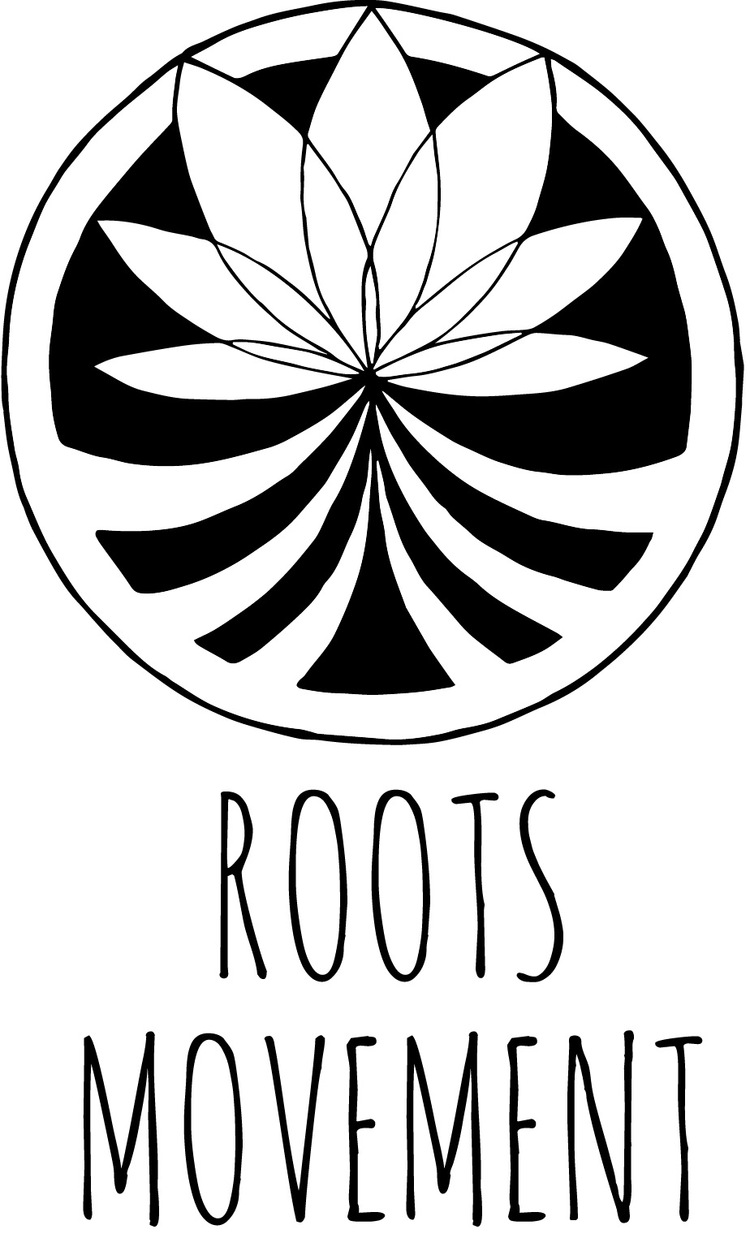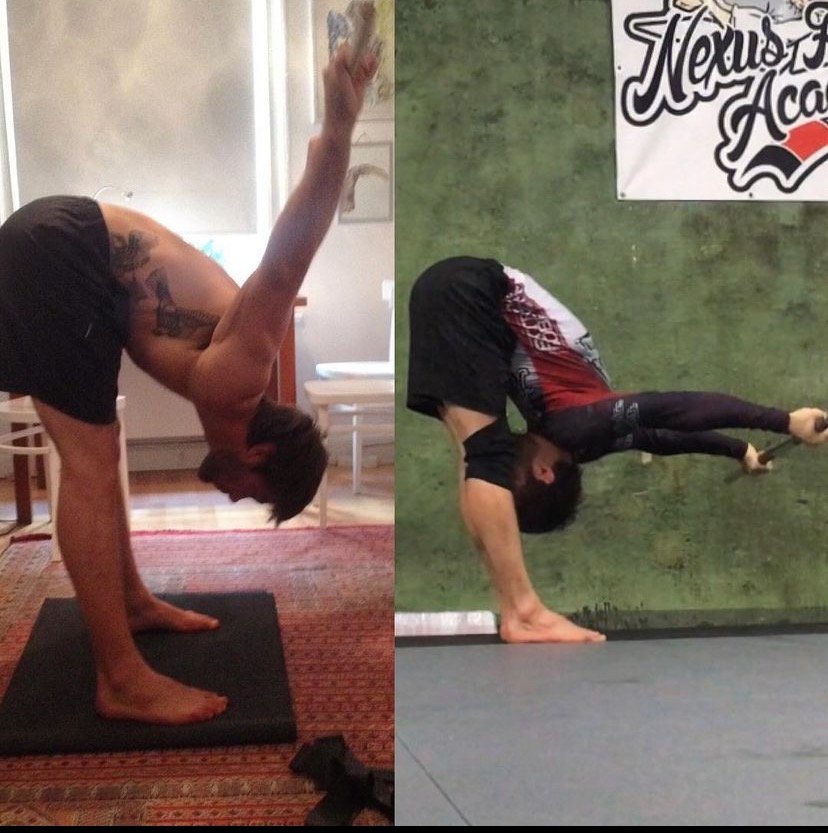When worlds collide.
I’ve been buzzing for the last few days, I’ll tell you why.
During a recent BJJ Globetrotters camp I was talking to fellow black belt Lilo Asensi about BJJ.
How and why people do the techniques they do? and how do they know when to do what?
How can we train and teach to improve our intuition of when to do what?
I have been learning Indirectly from Estonian Priit Mihkelson over the last few years after seeing the things he was sharing. He was focusing on defensive postures and was talking about things and teaching in a way I had never seen before. He showed defensive postures in a precise way and he would also say simply ‘don’t be flat’, ‘don’t let them get under hooks’.
I started to use his defensive postures as best as I could, they kept me safe. From there I was often able to escape when the right moment presented itself. I often didn’t have a particular escaping technique in mind but would always refer back to his simple rules of don’t be flat, don’t let him get under hooks.
I watched a video from one of his close students Chris Paines where he was showing concepts and principles to ‘defend everything‘. This also had a big positive impact on my Jiu-Jitsu.
Christian Graugart, The founder of the BJJ Globetrotters camps also taught and released some interesting concept driven classes (White belt survival crash course and Foundational drills everyone should know, no instructor needed)
What they had in common was that they were using very simple ideas that could be seen as ‘rules’ for when we train/roll in BJJ. I was very drawn to this way of thinking and learning.
I also didn’t have my own Instructor to show me techniques so having the concepts/rules to guide me was very helpful.
Around eight years ago I met my friend and mentor Joseph Bartz. Although I loved BJJ I felt there was much more to be discovered and learned under the bigger umbrella of ‘movement’.
I started doing parkour, dancing, strength and mobility training and even started crafting through the message he was sharing which was essentially to ask the question, what is it to live a good life?
Through Joseph I was introduced to Josef Frucek and Linda Kapetanea of Fighting Monkey.
After attending a workshop of theirs around five years ago I left feeling exhausted, happy and excited.
The workshop was unlike any movement training modality I had experienced previously.
We were given tasks and games with simple rules and objectives and worked with partners and tools. We were never told how to do ‘it’.
The beautiful thing was although the group was made up of people with totally different backgrounds and ages everyone was only asked to bring their unique selves to the moment. Everybody could take part and everybody found ways to play and engage.
Although there was a lot going and often when I felt I was getting somewhere the rules would be adjusted and I had to adapt to the new variation of the game/task again and again, we always had the simplicity and constraints of the particular task to guide us. We were given the responsibility to find solutions and solve our challenges.
Around 6 1/2 years ago and my first daughter was born. I wanted her to grow up and go into the world open and capable to deal with all the chaos that is life.
My mom recommended me some books (Magic Places, the adults guide to young children’s creative artwork and the sacred urge to play) from the author Pennie Brownlee.
One talks about how we as parents can set up environments for children to discover their inate creativity in Art and the other talks about unfolding your child’s intelligence, imagination, creativity and joy for life.
Both books are about setting up environments and essentially letting them learn directly for themselves from the situations that take place, using their senses and creativity to guide them.
My tendency as a parent was to try help and teach them how to deal with the challenging moments that came but once I understood I was essentially robbing them of the chance to learn and grow in skills and confidence I became much more gentle with my help and would first just suggest a new idea or strategy to reach their goal or solve a difficulty.
Doing it for them was now saved for when we had to leave five minutes ago and still needed to put clothes and shoes on.
During the time I was looking for other ways to move and practice I discovered parkour and although I had difficulty with simple movements, landing jumps of any sort of precision and couldn’t balance on a rail for more than a few seconds for example, I was very attracted to the fact that I could practice it on my own and essentially anywhere. There were no rules and set criteria apart from working towards certain level of control and grace in the movemnts I was attempting
It was easily scalable and I started with small jumps on flat ground. In parkour we always change the place we practice and and therefore we always have to adapt to the new environment.
I was enjoying the practice and heard about a guy called Rafe Kelley. He was a big proponent of training in nature and talked about the benefits of training parkour in nature. To climb, vault or jump on rocks and trees rather than man made structures provides us with so much more complexity. Our senses take in so many more details, the subtle angles of a branch, the rough and uneven textures of a rock for example. A lot of how we navigate these nuances are unconscious but again, the environment and our direct experience with it serves us as a great teacher.
Another person that I have been lucky to get to know and learn from is Kyle Fincham. He was teaching a workshop called Infinite Play and promoted it with the following message, ‘This workshop is a playful exploration; there are more questions than answers, and more suggestions than instructions. Play welcomes risk taking, and facilitates the possibility of surprise and discovery; elements that feed our intelligence and creative potential. We will utilize tools such as coordination, rhythm, imagination, physical problem solving, and discourse on our trek through the mountain of human potential’.
We spent the weekend getting lost with a variety of open tasks and games and were told we were free to rebell and and even break the rules if it felt right. Kyle was very much about giving each participant the space and freedom to be and discover things for themselves. It was Awesome!
During the pandemic I had free time and decided to carve a spoon, I had an axe, knives and wood so I carved my first spoon. It worked and was very satisfying. Since then that has become a big hobby in my life and I have carved hundreds of spoons as well as cups and bowls.
I watched a few videos on YouTube but essentially taught myself. If something didn’t work I’d try it another way, I let my senses and my direct experience with the situation guide me.
When I would watch videos of experienced carvers I would sometimes pick up a new idea or concept to try but the way I was doing it was very similar and worked for me. When working with wood the grain and the wood itself is the constraint and while there are variations of cutting techniques and the order one may choose to do things there are only so many ways in which it can be done.
Joseph asked me to come teach grappling for a group a few years ago at a weeklong intensive workshop he offers and Berlin titled TKFH, which translates to dancing, fighting, locomotion and creating.
My task was to find a way to teach grappling to a group with a varied background, mostly without experience in martial arts. So I started thinking how to do just that..
I really felt the benefits of using concepts/principles to learn from working with the information Christian, Priit and Chris had shared.
I wanted everyone attending to feel safe and free to try things without the fear of injury or judgment.
I spent my time coming up with games/exercises that I could identify within the bigger game of BJJ. Within these simple games/exercises I could explain what the goal was for each person.
I only showed a techniques as away to present a concept. We didn’t drill or repeat any techniques.
I had the benefit that most of the people attending were already training movement in someway and had a decent level of understanding of how to move their own body in space.
After introducing and playing the various games with the group over the week, I was very happy to see that they always had an idea of what the goal of the game was.
The simplicity of it was the framework they needed to work towards a goal and solve the diffuculties they encountered.
After the week, looking from the outside I could see they were doing it, they were grappling and finding solutions without being shown techniques. They simply use their senses and intuition to help them make decisions for the particular situations they found themselves in. Amazing!
As someone with experience it’s easy to want to help someone by giving them a technical solution to solve a specific problem, it makes us feel important and helpful.
But it could be, as in the case of raising children, it may very well be hindering them of developing their own capacity to problem solve and find solutions.
I would use these games and exercises as a warm up when I taught my regular BJJ class once a week but felt it was a bit ‘out there’ and I was still teaching techniques as was the way I had originally been taught and is the conventional way currently.
Three days ago I discovered Greg Souders. I heard him on the Sonny Brown break down podcast talking about Ecological dynamics and psychology and how he uses the science of it to teach BJJ. I was listening and lightbulbs were going off. He has been using games to teach athletes to a very heigh level with success and doesn’t drill or show techniques, something very unorthodox in the world of BJJ! He was also on the Primal MMA coaching podcast and again did an amazing job of communicating his approach and reasoning for teaching the way he does.
I’m very excited to have discovered how the various practices in my life have a very common thread and it’s something I can learn more about. I just bought the recently published book by Julia Blau and Jeffrey Wagman titled, Introduction to ecological psychology, A lawful approach to perceiving, acting and cognizing.
I know there are layers to everything and while I am having a bit of a personal aha! moment, I know I have alot to discover.
I feel as if something is becoming clearer and that gives me energy and courage to keep following my intuition and not rely and hope on others to give me answers.
I will finish with a quote from a recent Fighting Monkey post as they have been a big part in my path and the words are making more sense then ever for me.
"There is no authority. No concept, no magic formula that can explain life to us.
We are the first person receivers of our own life, and it is up to us to find out what the world is and what questions are worth answering. "
Thank you to all the people I mentioned. I am really grateful you have all shared so much.
Sincerely, Simon








